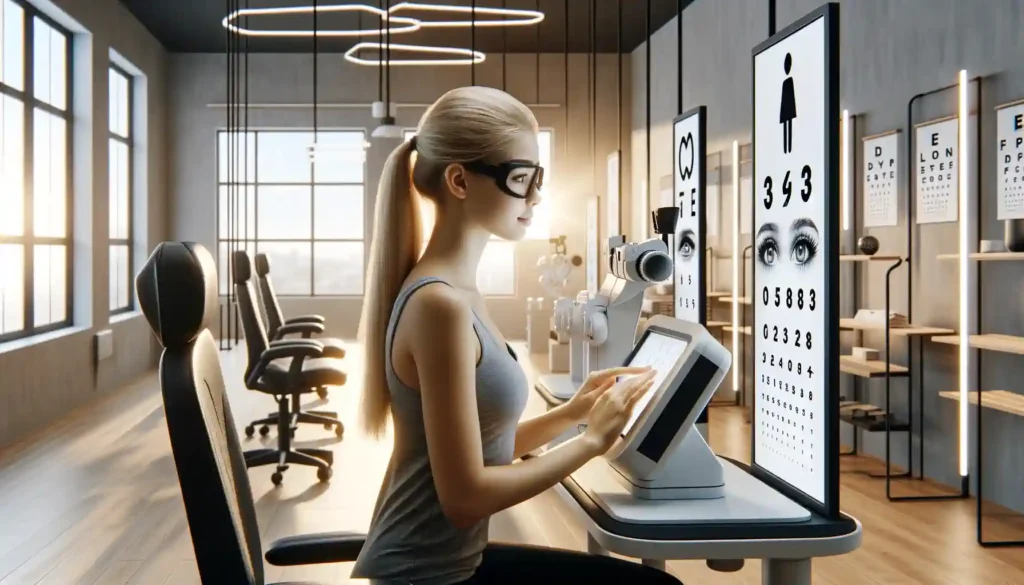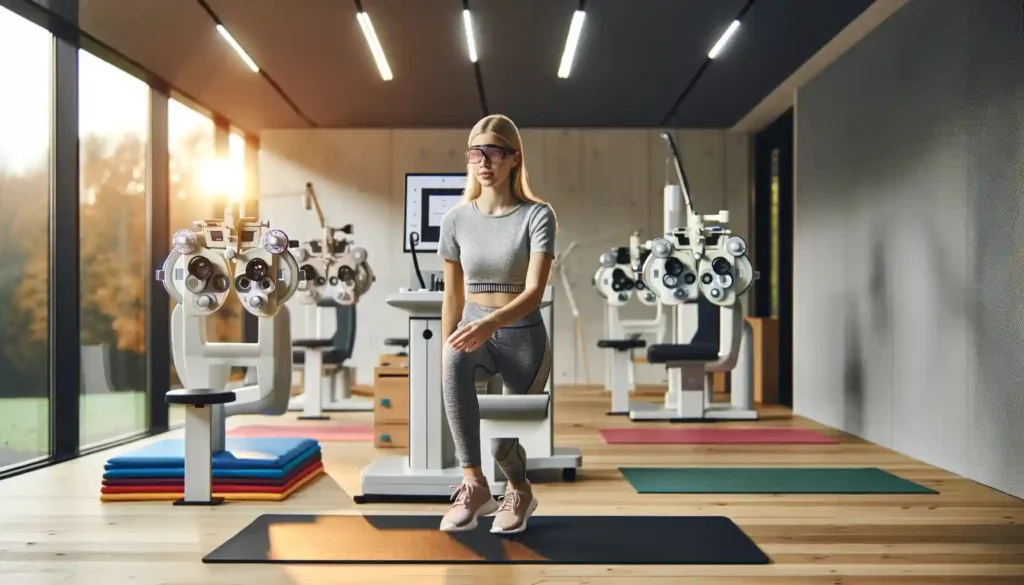I would like to share with you The Bates Method to get better Vision Without Surgery or Glasses. Bates exercises will help correct vision in case of myopia, hyperopia, astigmatism, or age-related vision problems. In addition, people with normal vision often can make it even better. Improper refraction is considered a temporary violation. Which, with appropriate exercises, can be significantly reduced or completely eliminated.

Abusing Spectacles can ruin sight
At the same time, spectacles that help to see well again fix the broken refraction and make it permanent. The longer a person wears glasses, the more insurmountable the visual impairment becomes. And the less likely it is, someday it will be possible to be cured. The devices use permanently curved glass lenses. According to the Bates Method to get better Vision Without Surgery, the screen must be moved back. Or move the lens itself to get a clear image of a near object. The human eye works on a different principle: shape changes lenses. The more convex the lens is, the more it can focus light from nearby objects.

Eyesight Improvement: The Bates Method for Naturally Cure Vision Problems
Refraction in the eye occurs not only with the help of the lens. But to a greater extent with the help of the cornea. The lens and cornea work together as a kind of “system lens. ” If the retina is even slightly farther than necessary, the focal point for the rays coming from distant objects will be too close, and the image will be blurry.
If the retina is located too close to the lens system (otherwise, in words, if the eye turns out to be too short). Then the focal point for rays from near objects is too far away, behind the retina, and the image will be blurred again. In the first case develops myopia, and in the second – farsightedness. Astigmatism occurs when there are abnormalities in the shape of the cornea. Or that are less common in the form of a lens. If the cornea is not perfectly symmetrical shapes, the rays are deflected in different ways and will converge. At different focal points, forming, at best, a not-quite-clear image.
What is Presbyopia and how to cure Farsightedness
Presbyopia or Farsightedness occurs because, over the years, the lens loses its elasticity. And consequently, its ability to change shape in the process of accommodation. Visual impairment, however slight it may be, is almost always accompanied by a deterioration in the work of the external eye muscles. One of the consequences of this is a violation of the accuracy of the coordination of the visual axes. Differences between sets of signals from the left and right eyes allow you to display depth and obtain a volumetric image.
However, human eyes are located close enough to each other, so even with perfect vision, a truly three-dimensional image can be obtained at a distance of no more than 45 meters or 150 feet. Behind this distance, the signals from both eyes become too similar to transmit any information about the depth. If the outer eye muscles are working badly, the range of correct depth perception is reduced to several meters, and in some cases, it disappears altogether.
The Bates Method: A Holistic Approach to Restoring Your Eyesight
American ophthalmologist William Bates was born in 1860, and his theory improved vision and his exercises for the eyes developed at the turn of the XIX and XX centuries. In 1917, he opened the first course, The Bates Method to get better Vision Without Surgery for those wishing to see well. Three years later, he published a collection of exercises, which are being reprinted today, and many people enjoy these exercises.
Bates argued that the main cause of refractive errors is that he called it “tension.” He believed that stress interferes with the realization of the unconscious a person’s aspirations to see well. According to the Bates hypothesis, refractive disorders are not congenital and incurable but acquired. If you change the bad to good habits, it is possible to create conditions for restoring vision. According to Bates, there are two types of “stress”: negative emotional agitation and involuntary tension caused by increased efforts to see (instead of letting the visual system work calmly and relax).
Thus, in its first part, the Bates hypothesis states that negative emotional arousal somehow disrupts the accommodation mechanism and negatively impacts the visual process. And the return of emotional stability can improve the situation.
How Spectacles Affect Vision Problems
But what happens when, in response to visual impairment, a person begins to use glasses?
Accommodation occurs automatically and involuntarily due to feedback from the brain. When the observed object is focused, the brain is satisfied, believing that the mechanism accommodation works correctly. Bates’s method shows If violations are eliminated with the help of glasses, then the brain believes that vision has been restored, and there is no need for improvement in vision for a person, and his wrong, impaired vision remains. Each exercise developed by Bates is aimed primarily at eliminating violations in a certain area of the visual system, but at the same time, it strengthens other zones. Therefore, in the presence of any visual defects, it is advisable to perform all of them.
Bates was very persistent in arguing that a person who wants to succeed with his method should not wear glasses, but this advice is from the category of impracticable. If vision is very poor, sudden complete rejection of glasses can cause tension, which is exactly what the ideology of the method seeks to avoid. Therefore, glasses should be discarded only when it does not interfere. Doing work and during exercise.
Contact lenses vs spectacles in natural vision improvement
Contact lenses produce the same results as glasses. But since contacts are more difficult to put on and take off than glasses. They tend to be worn longer without taking off than exacerbate harm. Therefore, in this case, glasses are better simply because they are easier to remove. To begin with, you need to take off your glasses every time you don’t need them. You can even make a table according to which glasses are not worn for 15 minutes every day, longer than the day before. You can also keep a diary to keep track of your activities. Exercises, the effect of them, and your feelings.

Eyesight Academy Course to get better eyesight starting today
The Eyesight Academy – the premier online course for improving your eyesight naturally and without invasive surgery.
Our comprehensive online program is designed to help you improve your eyesight using the proven techniques of The Bates Method to get better Vision Without Surgery, and much more modern updates, which has been used successfully for over a century.
Enrolling in our course gives you access to a wealth of resources, including instructional videos, interactive exercises, and personalized coaching. You’ll learn how to relax your eyes, improve your visual habits, and practice exercises to help you see more clearly and with less strain.
Our program is suitable for anyone, regardless of age or level of visual impairment. Whether you suffer from myopia, hyperopia, or astigmatism, or simply want to improve your vision, our program can help you achieve your goals.
Enroll today and take the first step towards a better vision and a more fulfilling life.
Palming to relieve eye fatigue and get better vision
The main principle of the Bates method hypothesis is that the cause of visual impairment is tension. Logically, the way to heal it would be to rest the eyes by just closing them for a while. Usually, people do this completely involuntarily. Sometimes they also cover their eyes with their hands. The Bates method is based on the simple idea of resting your eyes by closing them. The eyelids are calmly lowered, and from above, the eyes are covered with the palms of the hands without any pressure on the eyeballs, but so that the light does not come inside.
The edges of palms are lightly pressed to the cheeks, and fingers to the forehead. Palming is usually done in a sitting position. Your elbows can be resting on a table or a pair of pillows in your lap. The person must be comfortable, calm, and relaxed when performing palming. Of course, no one should bother him at this time. It is necessary simultaneously as you can relax all the muscles of the face, neck, shoulders, and other body parts. AND try to drop all unpleasant thoughts. So sit for a few minutes or how many want you to. Better – at least 5 minutes. Palming should be repeated 3 to 5 times a day.
How to get a better effect from palming
It is possible during palming to imagine something pleasant because, at the same time, the eyes react to the picture in the same way as if it were real. In this case, the brain is unaffected by refractive disorders and therefore forms the correct model of behavior for the eyes. With The Bates Method to get better Vision Without Surgery, If a person has myopia, you should pay special attention to distant objects when looking at the picture. If farsightedness or presbyopia – look into the nearest row. There are differences between looking at a picture and dreaming. In a dream, eyes make fast, chaotic movements that are not controlled by memory or imagination. Dreams are believed to be associated with noise coming from the cerebral cortex. A brain that has nothing to do with a state of rest.
If your eyes suffer from tension in a dream, an exercise called “long swing” can help, performed just before bedtime. Short-term palming can and should be performed at any convenient time. Even a few seconds of palming can refresh the eyes and give the brain a rest. You can even close your eyes alternately. It can be done even while watching TV – during commercial breaks. The quality of darkness that a person sees with his eyes closed reflects the state of vision. If a person sees colored circles, dots, lines, etc., then this means that the eyes and the central vision are not completely relaxed. The darkness should be absolute, while the person does not strain.

